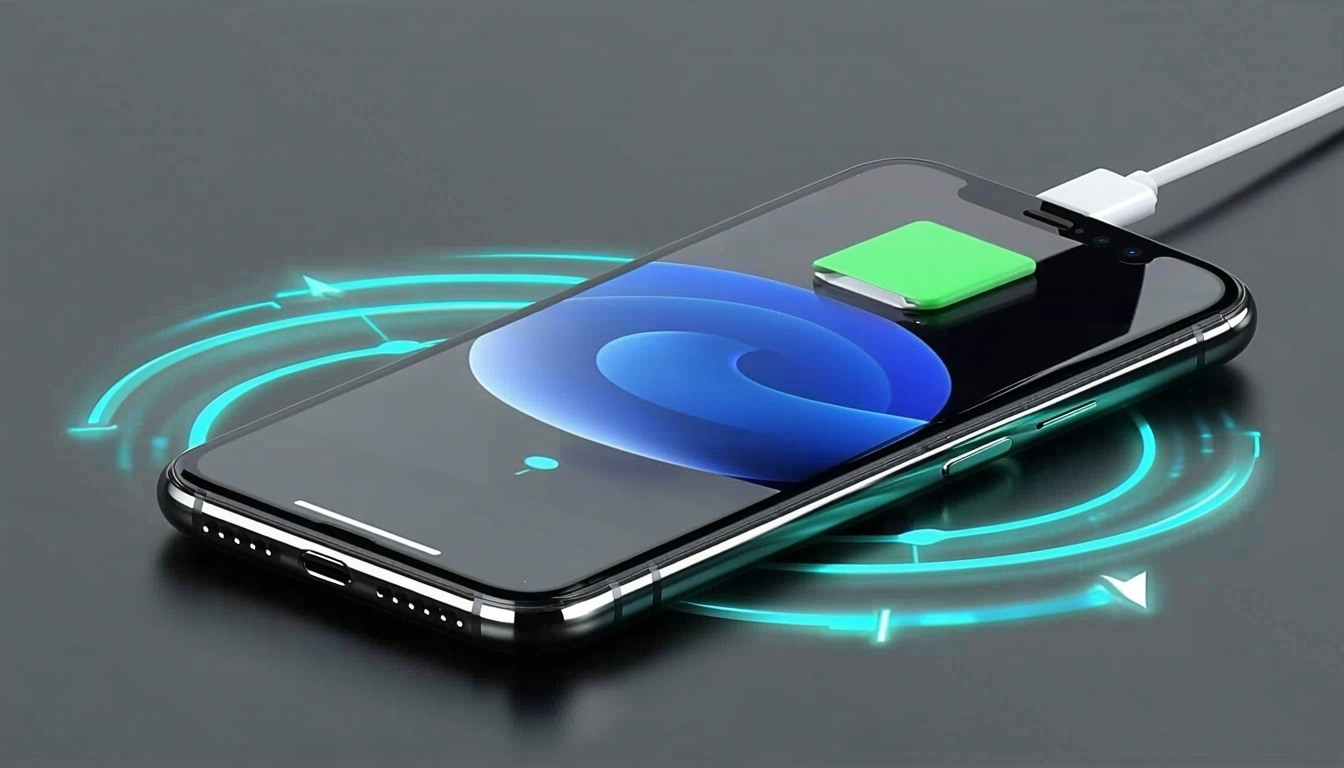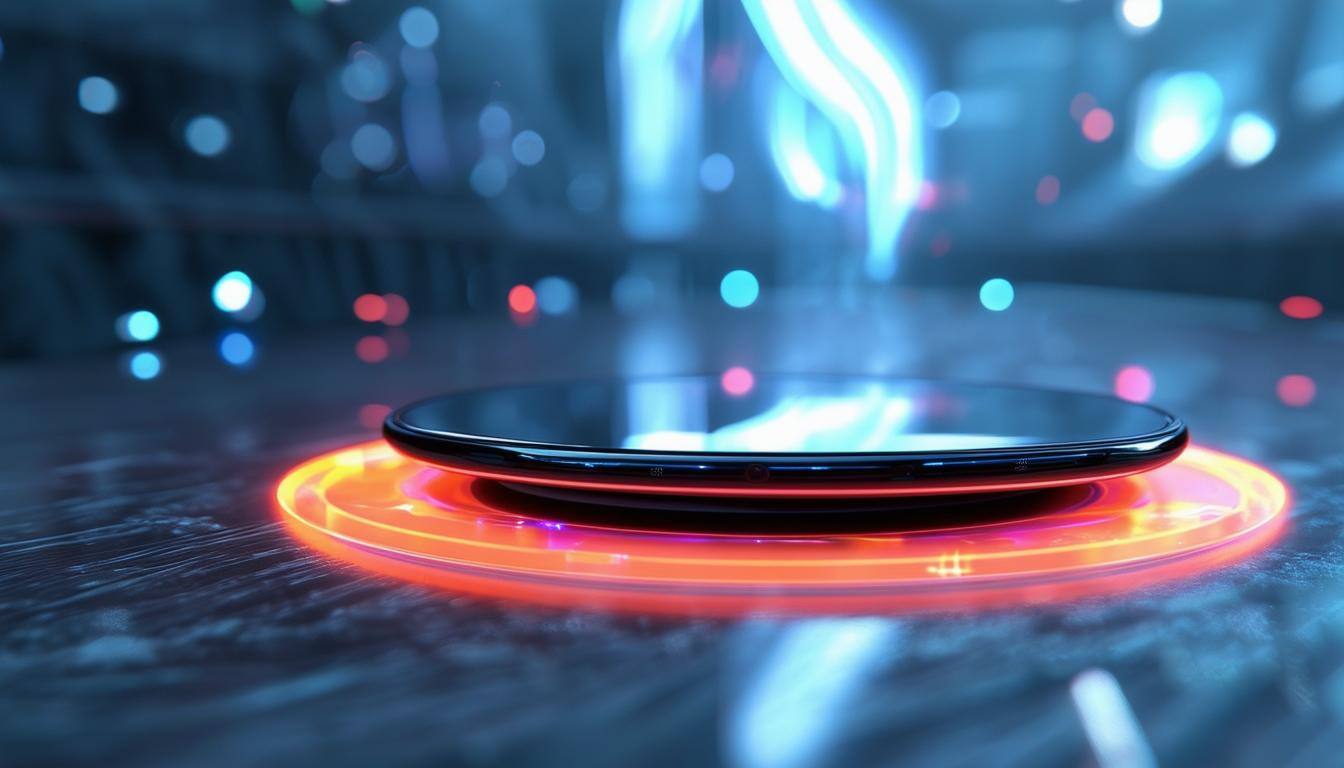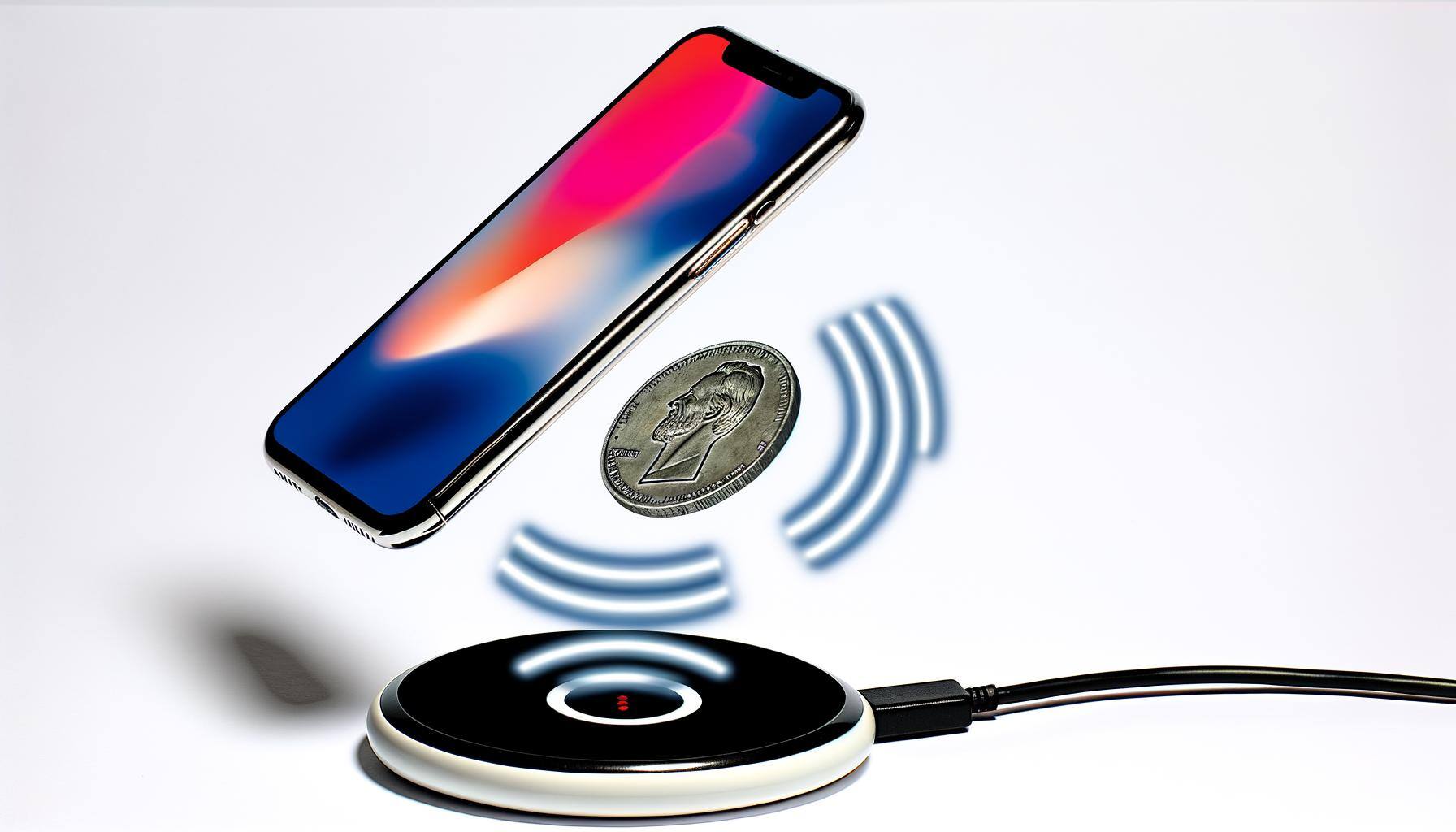This technical blog provides a sneak peek into what went down at our GRL exclusive technical webinar [Qi2: Pioneering a New Paradigm in Wireless Charging Accessibility]. If you would like to be informed about when our next free technical webinar session is happening, be sure to subscribe to our newsletter or follow us on LinkedIn.
What is the Qi wireless charging standard?
Qi (pronounced “chee”) is an open, collaborative wireless charging standard developed by the Wireless Power Consortium (WPC), and has become one of the most widely adopted standards within the consumer electronics market. Qi currently supports up to 15W of power transfer to mobile phones and handheld devices.
To date, over 7,500 types of smartphone chargers have become Qi certified, alongside hundreds of Qi certified receivers in market circulation. The Qi wireless charging market is expected to make over one billion sales by the end of 2023.
How does wireless charging work?
Electromagnetic induction
Electromagnetic induction is a process that generates a magnetic field to charge batteries. The process abides by a similar principle to that of the transformer, with primary coils or charging pads located in the transmitters and secondary coils placed within receivers or mobile devices.
The electromagnetic induction process kickstarts when receivers are placed onto transmitters. This process sounds relatively straightforward, and has led some to wonder why standardization is required in the first place. But as with most technologies, things that appear simple on the surface have many complexities hidden beneath.
Basic components of wireless charging power profiles
Communication between receiver (Rx) and transmitter (Tx)
To ensure safe and efficient battery charging, battery management systems in the mobile devices require information from the power source or the charger to establish power contracts, regulate operating voltages, and detect the presence of foreign objects before battery charging commences.
Receivers detect for foreign objects by using amplitude-shift keying (ASK) modulation to communicate messages. Transmitters in turn rely on frequency-shift keying (FSK) modulation to communicate back to receivers.
Cross section of wireless charging receiver and transmitter
How Qi standards have evolved since 2010
2010 to 2021: Version 1.0 to 1.3
WPC introduced Version 1.0 of the Qi wireless charging standard in 2010, which supported single coil, coil arrays, and moving coil designs that allowed transmitters to deliver up to 5W of power. However, Version 1.0 transmitters had limited flexibility. Thus, manufacturers could only optimize the wireless charging process by making adjustments to Qi receiver designs.
In 2012, version 1.1 would increase the number of supported transmitter types to 12, giving manufacturers greater flexibility and design freedom. Furthermore, Qi 1.1 wireless chargers also featured improved sensitivity for foreign object detection, an attribute that plays a significant role in user safety and usability. In addition, Qi 1.1 transmitters could also be powered by USB chargers.
The Qi standard would experience a major breakthrough in 2015 with Version 1.2. This release would come alongside the advent of the Extended Power Profile (EPP) that increased charging speeds to 15W. Power receivers also received unique IDs, and thermal tests were also introduced to further optimize transmitter performance under various temperature conditions.
2021 saw WPC introduce Qi Version 1.3. There are considerable updates are made including the more authentication. Most of the updates made the Qi more safer, consistant and reliable.
2023: Qi2 and MPP
The Qi2 wireless charging standard was announced with Magnetic Power Profile (MPP) along with few updates to legacy BPP and EPP power profiles in 2023. Designed to provide consumers with greater levels of convenience, efficiency, and safety, legacy MPP profiles are expected to co-exist with newer Qi standards for the foreseeable future.
A closer look at MPP in Qi wireless charging
Is MPP the same as MagSafe?
MagSafe is an Apple Proprietary technology. MPP, on the other hand, is derived from MagSafe, and is officially recognized as an open standard developed by members of WPC with major contributions made from Apple.
MPP vs BPP and EPP
The original BPP standard featured in Qi Version 1.0 and 1.1 was limited to maximum of 5W of power, with single directional communication from receivers to transmitters. The Extended Power Profile (EPP) introduced bi-directional communication. Additional states such as negotiation, calibration, and re-negotiation phases were also introduced to improve foreign object detection. EPP5, a variation of EPP, was also made available, but had power transfer capacity restricted to 5W of power outside of proprietary versions. Legacy power profiles power can provide high transfer efficiency depending on the transmitter and receiver coil alignment. However, if the transmitter and receiver coils are not aligned well the coupling, the resulting co-efficient will be suppressed, resulting in low power transfer efficiency as well. In some cases, receiving devices won’t charge at all. This creates a usability issue, that is addressed by the new MPP power profile.
Differences and similarities between BPP, EPP, and EPP5
Magnetic attachment within the new MPP mode tightly secures transmitter and receiver coils in optimal positions, providing users with flexibility and convenience to use smart phones even as they charge.
Legacy wireless charging power profiles vs Qi2 MPP power profile
This magnetic attachment helps to improve the coupling co-efficient and guarantee 15W power transfer with high efficiency.
MPP structure consists of a series of magnets used to align and tightly couple transmitter and receiver coils. Apart from the physical magnet, additional states are introduced in protocol along with existing BPP and EPP features.
Components of MPP power profile
During MPP mode, the transmitter and receiver operates at a frequency of 360KHz, compared to BPP & EPP’s operating frequency range of 87KHz to 205KHz. In addition, MPP's improved communication lets it transfer data four times faster compared to previous power profiles, which also enables for faster authentication. Despite these changes, the authentication protocol between MPP and EPP (Version 1.3.x) remain the same.
Protocol operating mode of MPP
Entry into MPP wireless charging mode is a multi-step process. All transmitters start within BPP mode at 128KHz. In this mode, communication is unidirectional from transmitter to receiver. Receivers that are capable of supporting MPP will first send an XID packet with MPP support to indicate said capability.
Should the transmitter be incapable of MPP support, wireless charging will continue operating in BPP or EPP mode. Otherwise, the transmitter will make adjustments according to the XID package instructions. If the XID packet holds a request for restricted mode, transmitters will adjust its operations to 360Hz and operate with the BPP protocol under restricted mode. And if the receiver asks for Full Mode MPP, the transmitter will adjust to 360Hz and operate with the MPP protocol.
Any errors that occur during the operation will result in the transmitter falling back to default BPP mode of operation.
Flow chart of entry into MPP mode
Why was MPP operating frequency changed?
Reduced frequency interference
The coils within wireless charging devices emit frequencies that are similar to those emitted by key fobs that are used to unlock cars. When key fobs and wireless chargers work within the same environment, interferences can surface, leading to difficulties in opening car doors or starting car engines, or even trunk lockouts. Under some circumstances, such malfunctions may even prove lethal.
It is therefore important for MPP transmitters and receivers to emit frequencies at 360KHz, outside of key fob spectrums.
How key fob frequency interference can disrupt wireless charging
Safety improvements
Foreign objects such as coins, credit cards, and keys that wedge between transmitters and receivers can also pose safety risks to users and/or result in damage to mobile devices and charging pads. Wireless chargers therefore require an effective foreign object detection mechanism to avoid such problems.
However, false foreign object detection can create a poor user experience by cutting off transmission when there is no need to. Luckily, improvements made in MPP Power Loss Accounting (MPLA) now helps transmitters to detect foreign objects more accurately.
Want to learn more about Qi wireless charging and other connectivity technologies?
Watch the full webinar on-demand or download the presentation deck here. To be alerted about our next free technical webinar, follow us on LinkedIn or subscribe to our newsletter.
To receive personalized consultation on how you can design and certify your wireless charging products for Qi compliance, simply reach out to us or learn more about our Qi standards compliance and certification services.
About the author
Rajaraman Venkatachalam
Executive Vice President of Protocol and Power Solutions
Raja spent over 23+ years in technology development at GRL, Tektronix, Intel and Prodigy Technovations. Raja is involved in developing new technologies and enabling companies to adopt in their product designs., has deep experience in post-silicon validation methodologies and developing electrical and protocol compliance testing solutions, and is an expert in multiple technologies including USB, and Qi.



.png)